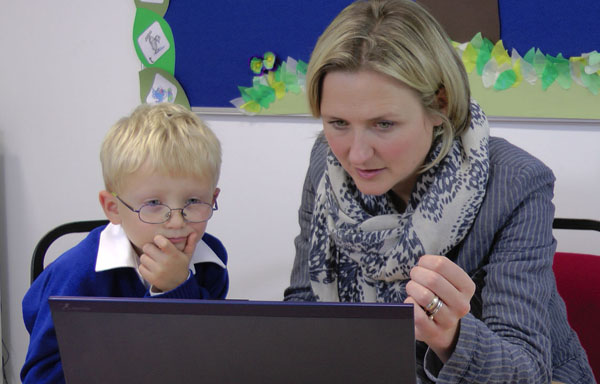Why should I use a Language Screener?
Language difficulties can be surprisingly difficult to spot. If a child has unclear speech or limited vocabulary or struggles to use complex sentences you may be able to ‘hear’ there is something different about their talking. However, you can’t always simply observe if a pupil has understood words. Using a language screener can make this process easier.

When the class are given instructions, is every child who follows them successfully understanding the words or using context, routine, visual clues and observing their peers? When a child doesn’t complete the instruction successfully they might not have understood, or they might not have been listening or wanted to comply. You cannot tell by observation alone, but performing a language screen can help.
You might suggest that it doesn’t matter if the child is not understanding every word where they can use routine, context and visual support to help them. It does! As children move up the school these additional cues will start to lessen and they will need to be more reliant on their understanding of language.
It will become very hard to understand what they are reading and respond accordingly, meaning they will miss out on vital learning and social interactions. They could also become withdrawn or anxious and might struggle to make and keep friends.
We know that 40% of pupils with language difficulties are being missed, despite highly committed school staff teams (The Communication Trust, Talk of the Town Report 2014). The only way to be sure a child is understanding the words, is to remove all cues so that nothing but the words remain, meaning just their understanding is being assessed. The only way not to miss anyone is to screen everyone.
What to look for in a Language Screener
There are a number of tools available for schools to screen children for developmental language difficulties. Some of them are checklists and some require children to complete tasks. Checklists are usually quick to complete but give more approximate results than a task based screen. Checklists flag up potential difficulties that would benefit from further investigation.
They can be a good starting point. However, as we have already seen, language difficulties are often hidden and cannot be detected by observation alone. Checklists rely on observation, they risk missing children.
Task based tests can be informal or more formal standardised assessments. They will usually present the child with a series of tasks or pictures and ask the child to respond to a prompt. They are more powerful than checklists as they do not rely on observation of a child’s behaviour.
A standardised test is the gold standard. This is a test that will give you a standard score and percentile rank. They are usually trialled with thousands of children and allow you to compare a child’s performance to other students of the same age. They will also accurately identify where difficulties are present giving you robust reliable results.
A standard score of 100 is the average and a score of between 85-115 is considered to fall within the broad average range. Any child scoring below 85 will be considered to have performed poorly in the test in relation to children of the same age. Remember though, this type of test is not an exam, it’s about identifying where the child needs support – it can’t be passed or failed.
Sometimes standard scores are presented alongside percentile ranks. These also show how a child’s performance compares to those of the same age. Percentile ranks are reported from the 0.1st percentile to the 99th percentile. The 50th percentile in the average and a rank between the 16th and the 84th is considered to be within the broad average range. If a student scores below the 16th percentile they are considered to be in need of support.
All our Language Link packages (Infant Language Link, Junior Language Link, Secondary Language Link) include a robust standardised language screener that school staff can quickly and easily administer in school. They highlight pupils with the most significant needs for discussion with speech and language therapists, as well as those whose needs can be met in school through our targeted intervention tools.
What is a speech screener?
Most staff can hear if a child arrives at school with a speech sound problem, so why would we use a speech screener? A speech screener will tell you whether a particular sound is normal for a child’s age, which sounds may benefit from in-school work and when to discuss with a speech and language therapist. The child is asked to name an object in a picture and the adult working with the child records the sound the child makes at the beginning, end or middle of the word.
With online screeners (Speech Link for example!) analysis is then performed producing a list of any sounds the child has problems with that might be expected to be in place at the child’s age, plus whether in school work or discussion with a speech and language therapist is recommended.
Summary
In summary, using a language screener can assist in accurately identifying language difficulties that may not be apparent through observation alone. These tools help ensure no child is overlooked by evaluating their understanding in a structured manner.
A robust, standardised language screen provides reliable results, allowing educators to pinpoint where support is needed, thus aiding in effective intervention and ensuring children do not miss out on crucial learning opportunities as they progress through school.
